Manchester, NH Pollen and Allergy Report for Summer 2023
Pollen Allergy Trends in Manchester, NH
When is pollen lowest in Manchester, NH?

February
Lowest month total PPM
Avg. PPM
When is pollen highest in Manchester, NH?

April
Highest month total PPM
Avg. PPM
How does pollen in Manchester, NH compare to New Hampshire?
Manchester has a higher average PPM than the state of New Hampshire.
Manchester yearly avg PPM:
New Hampshire yearly avg PPM:
How does pollen in Manchester, NH compare to the USA?
Manchester has a higher average PPM than the USA.
Manchester yearly avg PPM:
USA yearly avg PPM:
Is pollen worse this year in Manchester, NH?
Spring 2023 was worse than spring 2022.
Spring 2023 PPM:
Spring 2022 PPM:
Average PPM in Manchester, NH
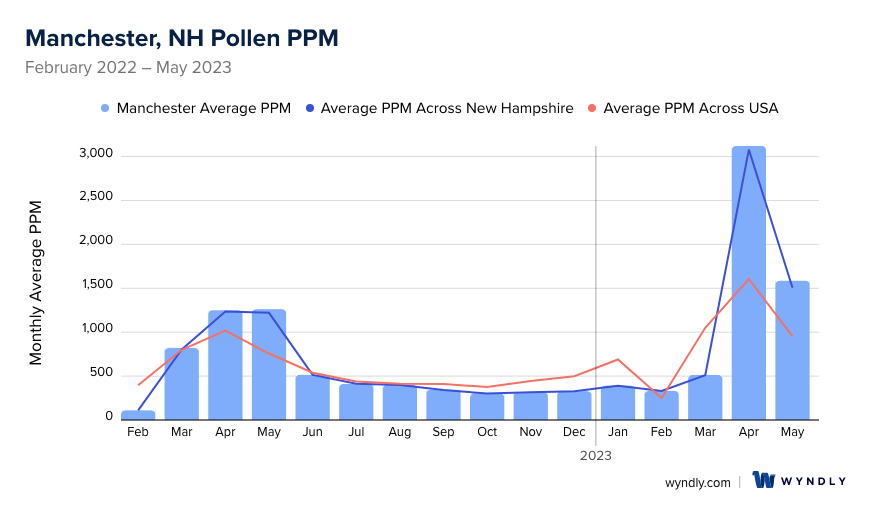
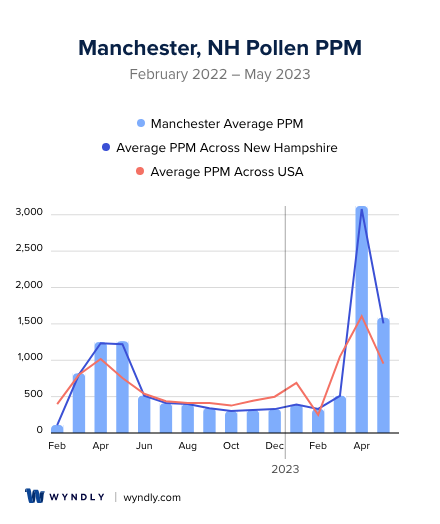
Manchester, NH Pollen and Allergy Breakdown by Month
Grass
When is grass pollen highest in Manchester, NH?
April has the highest grass pollen in Manchester, NH with an average PPM of
When is grass pollen lowest in Manchester, NH?
December has the lowest grass pollen in Manchester, NH with an average PPM of
Tree
When is tree pollen highest in Manchester, NH?
April has the highest tree pollen in Manchester, NH with an average PPM of
When is tree pollen lowest in Manchester, NH?
October has the lowest tree pollen in Manchester, NH with an average PPM of
Weed
When is weed pollen highest in Manchester, NH?
April has the highest weed pollen in Manchester, NH with an average PPM of
When is weed pollen lowest in Manchester, NH?
February has the lowest weed pollen in Manchester, NH with an average PPM of
Manchester, NH Pollen Monthly Breakdown by Pollen Type
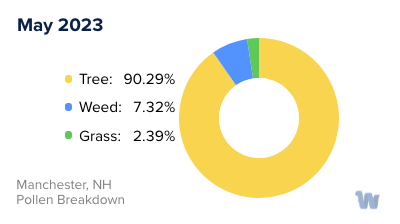
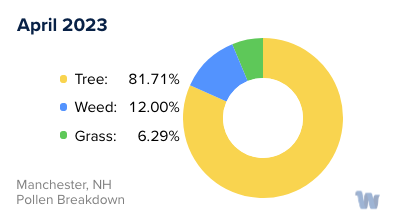
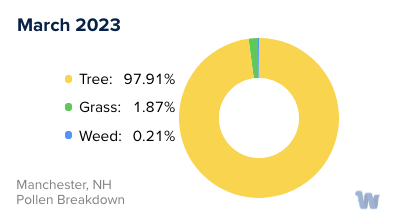
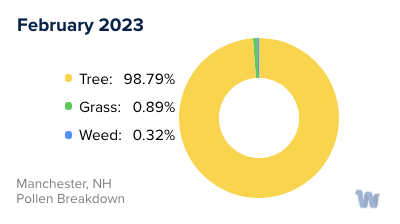
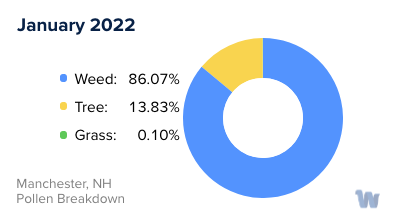
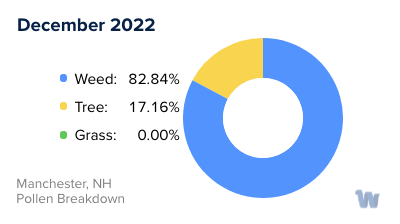
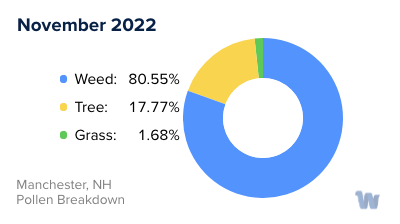
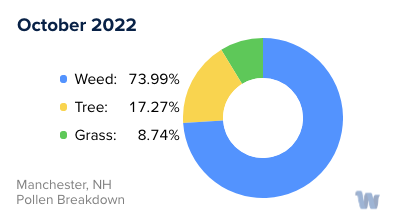
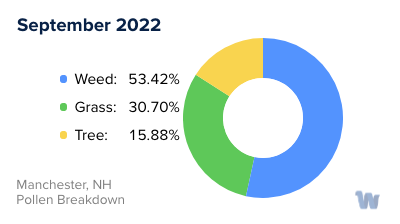
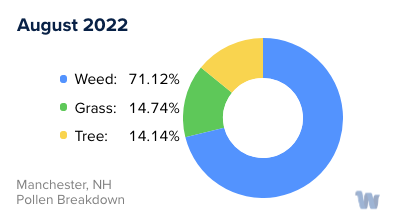
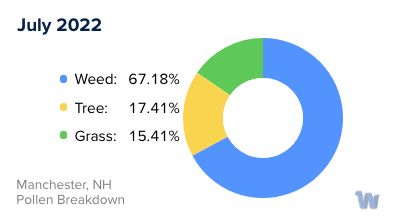
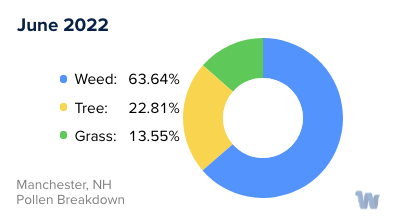
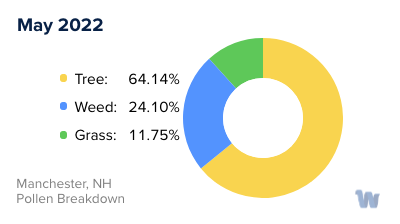
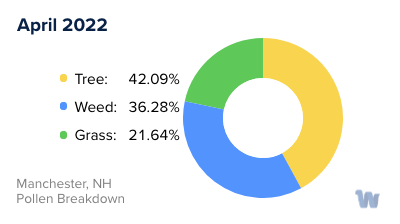
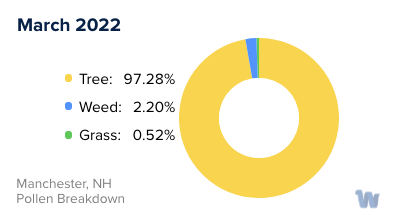
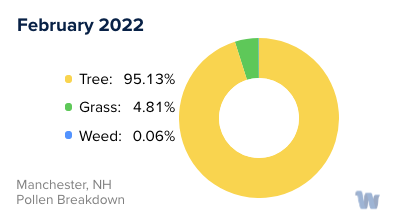
Pollen and Hay Fever in Manchester, NH
In Manchester, New Hampshire, seasonal allergies are a frequent concern for residents and visitors alike due to the city's variety of flora and the resultant pollen. These allergies, commonly referred to as hay fever, can cause a variety of symptoms, including itchy or watery eyes, runny nose, and sneezing. Pollen allergies can be triggered by various types of pollen, such as those from trees, grasses, and weeds.
Manchester's pollen season typically spans the spring, summer, and fall months. The specific type of pollen causing allergies often changes with the season. In spring, tree pollen is the primary culprit. This includes pollen from a variety of trees such as oak, cedar, willow, poplar, and hickory. As the weather begins to warm, these trees release their pollen, leading to increased allergy symptoms among those sensitive to these types of pollen.
As the calendar turns to summer, grass pollen takes the spotlight. Grasses like ryegrass, sweet vernal grass, and orchard grass begin to release their pollen. This shift from tree to grass pollen can result in a change in allergy symptoms for some individuals, as different people have varying sensitivities to different types of pollen.
As summer gives way to fall, weed pollen, especially from plants like ragweed, wormwood, and amaranth, becomes the predominant allergen. Ragweed, in particular, is a notorious trigger for hay fever symptoms.
As we move into winter, outdoor allergens decrease significantly after the first frost, offering some respite for those with seasonal allergies. However, it's important to note that indoor allergens can still cause issues during this time.
In terms of peak pollen months, residents and visitors should pay close attention to pollen counts in April, May, June, and September. During these months, pollen levels can reach their highest, leading to a potential increase in hay fever symptoms.
In conclusion, understanding the types of pollen and their seasonal variations can help individuals better anticipate and manage their allergy symptoms throughout the year in Manchester, New Hampshire.


